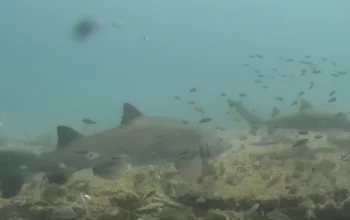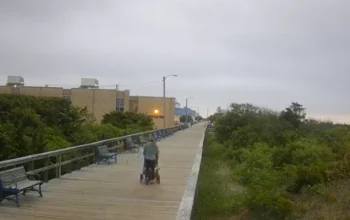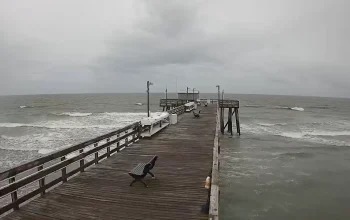Forsythe National Wildlife Refuge – Osprey Cams
Watch live footage from the Osprey nests at Forsythe National Wildlife Refuge.

The Rich History of Forsythe National Wildlife Refuge
A Legacy of Conservation
Edwin B. Forsythe National Wildlife Refuge did not begin as one unified sanctuary. Instead, it emerged from the unification of two earlier protected areas. Brigantine National Wildlife Refuge was the first, established in 1939. Barnegat National Wildlife Refuge followed in 1967. Each was created to conserve vital habitats—tidal wetlands and shallow coastal bays—crucial for migratory waterfowl.
In 1984, these two refuges joined forces. The new name honored Congressman Edwin B. Forsythe. As a dedicated conservationist from New Jersey, he championed environmental causes throughout his career. His legacy lives on in the thriving habitats that now bear his name.
Preserving Precious Coastal Ecosystems
Today, Forsythe Refuge protects over 48,000 acres of natural beauty in southern New Jersey. It spans a range of coastal ecosystems, but wetlands dominate the landscape. In fact, more than 82% of the refuge consists of wetlands. Of those, 78% are salt marshes—teeming with life and essential for water quality and storm protection.
Shallow bays, coves, and tidal streams wind through these marshes. These features not only support fish and shellfish but also provide safe nesting areas for birds. Because of this, Forsythe has become a sanctuary for countless bird species—some of them rare or threatened.
A Vital Stop Along the Atlantic Flyway
Birds migrating along the Atlantic Flyway rely heavily on Forsythe’s habitats. The refuge sits along one of the flyway’s most active routes. During spring and fall migrations, thousands of birds pass through. They rest, feed, and refuel in the marshes before continuing their journeys.
Shorebirds like dunlins and sandpipers flock to the mudflats. Waterfowl such as snow geese and northern pintails use the open water and marsh pools. Even birds of prey, including bald eagles, are frequently spotted soaring over the refuge.
As coastal development continues to shrink natural habitats, places like Forsythe grow even more critical. Each year, more birds depend on these remaining wild areas. The refuge plays a key role in regional biodiversity and environmental health.
Deep Roots: The Land of the Lenni Lenape
Before it became a refuge, this land was home to the Lenni Lenape. These indigenous people were among the first to harvest the bounty of New Jersey’s coastal waters. Their name, Lenni Lenape, means “true people” in the Delaware language.
They thrived along the tidal creeks and bays, fishing and gathering shellfish. Their deep understanding of the land shaped how they lived, hunted, and moved with the seasons. Many of the same areas the refuge now protects were once Lenape villages and hunting grounds.
Acknowledging this heritage is essential. Forsythe not only preserves wildlife but also respects the cultural history of the land. The stories of the Lenni Lenape live on through community efforts and educational programs at the refuge.
A Refuge for All
The story of Forsythe National Wildlife Refuge is one of protection and transformation. It began with a need to save habitat for birds. Over time, it grew into a symbol of resilience—both ecological and cultural.
From the salt marshes to the sky, life flourishes here. With each bird that lands and each tide that rises, the refuge continues its mission. It’s a place where nature gets a second chance—and where future generations can learn from the past.


